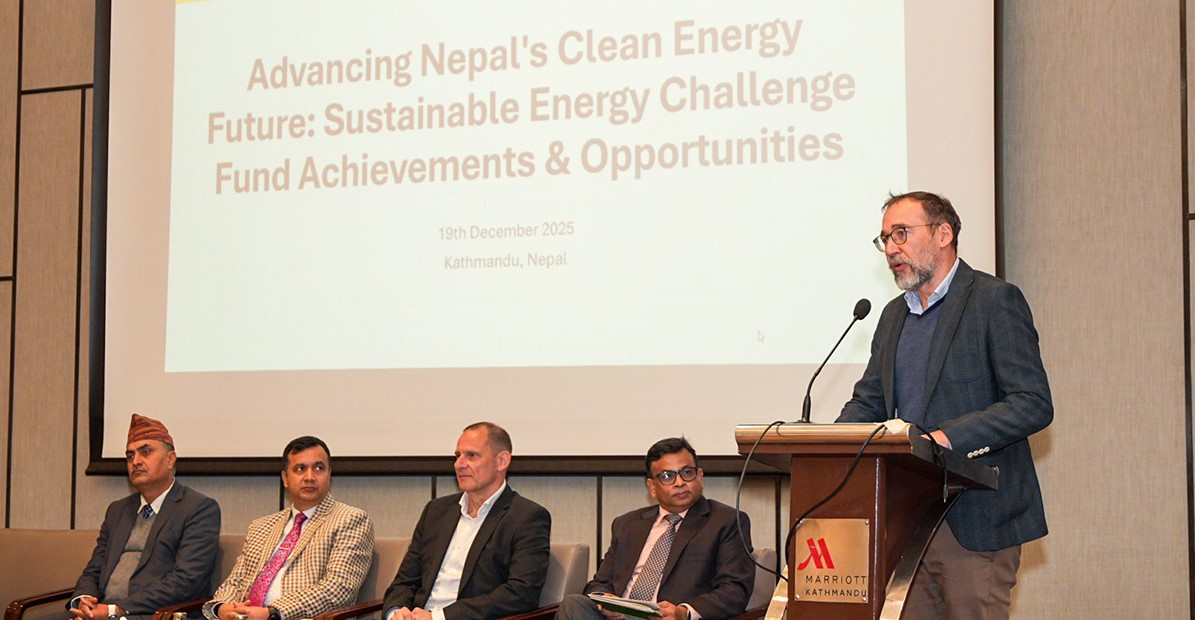Energy Update
Energy diplomacy inevitable to export electricity

Kathmandu; An increasing export of electricity to India in recent days indicates a bright future despite the country making no strong diplomatic effort from its side.
Nepal has gained a success in selling 39 MW of electricity from Trishuli and Devighat hydroelectric power plants in the Indian competitive market in mid-October 2022. Since then, 14 projects worth 632 MW have received such approval in around 12 months. Moreover, it is a matter of pleasure that the share of the private sector is higher both in terms of the amount of electricity that will be allowed to be exported and in terms of the number of projects.

A total of 319 MW out of 9 projects promoted by the private sector and 313 MW of electricity produced by five projects under the state-owned Nepal Electricity Authority (NEA) can be sent to India. This has given a respite to some extent to remove the woes that the hydropower produced in Nepal might not find a market to sell its electricity.
It can be felt that the authority, which once stopped the power purchase agreement (PPA) citing the lack of market, has got a great relief from this problem. Also, if the Indian market continues to be relaxed in this way, it can certainly be expected that Nepal's hydropower can be utilized at reasonable prices.

While talking about this success, the efforts of staff and the cultural relationship between the two countries have worked more than Nepal's energy diplomacy. Mainly, India's own thrive for utilizing sustainable and renewable energy has taken the country towards importing electricity from Nepal. Nepal's hydropower can be as important as wind energy for India, which has been relying on coal-based electricity sources that accounts for more than 68 percent of the energy supply.
At present the southern neighbor has moved towards importing electricity from Nepal. Although it is not that generous to purchase hydropower from Nepal, the time is coming nearer when India is compelled to do so due to a number of factors.
Depleting coal reserves and growing worldwide criticism due to the huge amount of carbon emissions caused by the generation of electricity from coal, seem to be pressing India to buy Nepal's hydropower definitely at some point. The only difference is that, Nepal needs to realize that India tries to impose a full grip on Nepal’s hydropower through an easy route and cheaper rate at a time when the Himalayan country expresses its desire to sell electricity to India without any delay.
Last week's approval for electricity import from four private sector hydropower projects can be considered positive. However, it can easily be seen that India is skeptical that Nepal could focus more on the Chinese market for its energy exports. It is even more obvious in the recent incident that India has approved more electricity export from Nepal very recently although it sought permission in this regard some six months ago.
After the announcement of the date of Prime Minister Pushpa Kamal Dahal's visit to China, scheduled for the third week of September, India instantly issued such approval. It is not difficult to understand India’s diplomacy that it will not allow Nepal's hydropower go beyond the grip of Indian jurisdiction.
Even if India has adopted a strategy of prohibiting the entry of third countries in Nepal's hydropower production, in the case of the electricity market, such a policy seems to be fatal for the country itself. For this reason, it can also be speculated that India is being flexible for Nepal's hydroelectricity even though the country is not fully willing to do so.
It can be understood from the abovementioned context that the approval to export electricity to India is not being materialized due to the sole need of Nepal. India’s inner obligation actually is reflected in this matter. Despite all this, the ingenious initiative of Nepal's political and diplomatic leadership has not been able to work. On the other hand, the initiative taken by the Nepali bureaucratic system on playing an important role during bilateral meetings of the mechanism cannot be undermined.
Prime Minister Dahal, who visited India in the first week of June, returned with the message of selling 10,000 MW of electricity to India in the next 10 years. Last week, India also confirmed the matter through its Cabinet decision. If we want to export the aforementioned amount of electricity to India in 10 years, the efforts from the bureaucracy alone will not be sufficient. Not only the Minister of Energy, Water Resources and Irrigation, but also the Minister of Finance and Foreign Affairs should play important roles from their parts.
Likewise, the strong roles from leaders of political parties, diplomatic mechanisms, private entrepreneurs and leaders in this sector are inevitable. Also, the time has come to mobilize culture and personal relationship mechanisms together with. Only if these can be materialized, we can be sure that Nepal's hydroelectricity can enter the Indian market as expected. However, if the expansion of the domestic market is neglected, it will definitely yield serious consequences that could put the country’s prosperity in peril.
Conversation
- Info. Dept. Reg. No. : 254/073/74
- Telephone : +977-1-5321303
- Email : [email protected]












